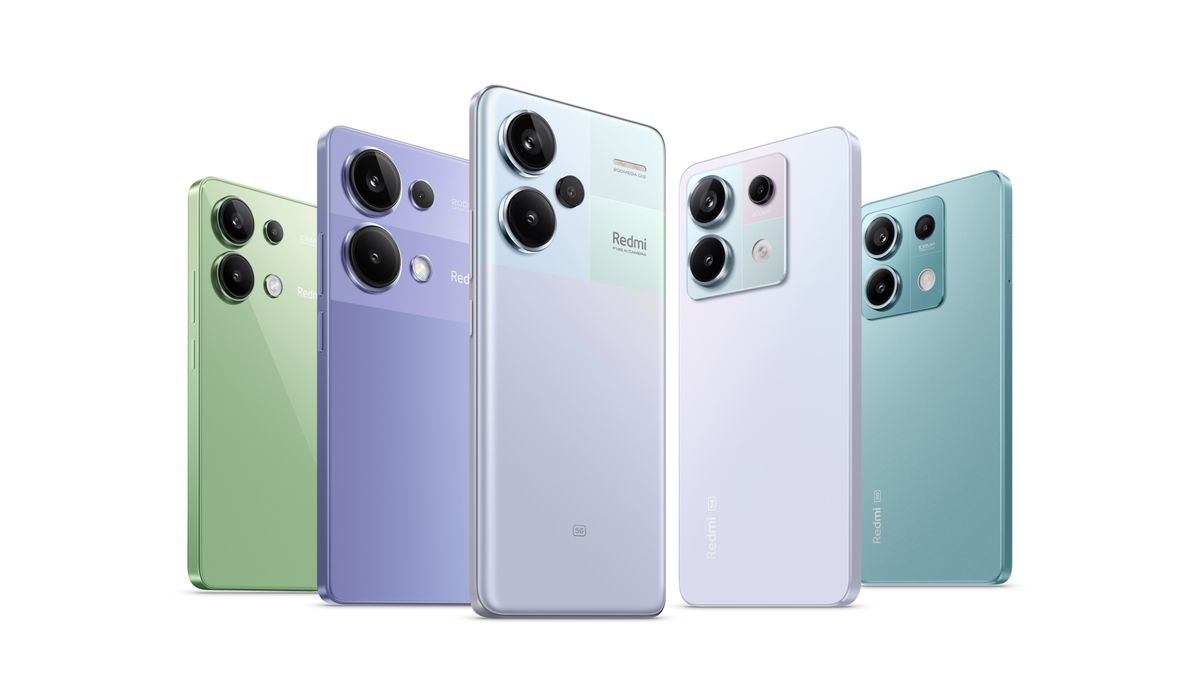What you need to know
- Xiaomi’s latest budget lineup consists of the Redmi Note 13 Pro Plus 5G, Redmi Note 13 Pro 5G, Redmi Note 13 Pro, Redmi Note 13 5G, and Redmi Note 13.
- The Redmi Note 13 Pro+ boasts impressive features, including a 200 MP camera, 120W fast charging, Dimensity 7200 Ultra, and a 5000 mAh battery.
- The Note 13 Pro rocks the same 200MP camera but swaps speed for smoothness with a Snapdragon chip and 67W charging.
- The standard Redmi Note 13 is equipped with a Dimensity 6080 chipset, a 108 MP camera, IP54 rating, and a 5000 mAh battery with 33W charging.
After initially launching the Redmi Note 13 series in China and then in India, Xiaomi is now bringing its latest budget lineup globally, and it’s all set to be HyperOS-ready.
There’s a bunch of devices on the roster: the Redmi Note 13 Pro Plus, Redmi Note 13 Pro 5G, Redmi Note 13 Pro, Redmi Note 13 5G, and Redmi Note 13. The Redmi Note series is known for being one of the go-to options for affordable smartphones, delivering a lot of value for your money.
If you didn’t catch the lineup’s debut, the Redmi Note 13 Pro Plus takes the crown as the top-tier model, powered by MediaTek’s Dimensity 7200 Ultra chipset. It sports a 6.67-inch OLED screen boasting a 1220 x 2712 resolution and a smooth 120Hz refresh rate.
Flip it around, and you’ve got a rear camera setup with a 200MP main sensor, 8MP ultrawide, and a 2MP macro. And let’s not forget the 16MP selfie lens on the front.
Even though the 5000mAh battery in the Pro Plus is a bit smaller than the Note 13 Pro, it compensates with lightning-fast charging. Zooming in at 120W wired speeds, though, there’s still no love for wireless charging. The Pro Plus flaunts its uniqueness with an impressive IP68 rating, leaving the other Redmi Note 13 models with a humbler IP54 rating.
Now, let’s talk about the Redmi Note 13 Pro 5G. It’s powered by a Snapdragon 7s Gen 2 chipset, packs a 5,100mAh battery, and supports 67W wired charging. Plus, it retains the classic 3.5mm port, along with Bluetooth 5.2 and Wi-Fi 5 support.
The Redmi Note 13 Pro 4G, on the other hand, has a Helio G99-Ultra chipset under the hood and includes a hefty 5000mAh battery with a 67W wired charging boost. It sports a FHD+ screen that hits a peak brightness of 1,300 nits. To keep things tough, it’s wrapped up in Gorilla Glass 5.
All three Redmi Note 13 Pro models are packing the same triple rear camera setup (200MP+8MP+2MP), a 16MP selfie camera in a punch-hole cutout, and 6.67-inch 120Hz OLED screens.

The two standard Redmi Note 13 models are practically twins, with matching 6.67-inch FHD+ OLED screens, a triple 108MP+8MP+2MP rear camera setup, and a 5000mAh battery that juices up at 33W wired speed.
However, they differ in processing power. The Redmi Note 13 5G comes equipped with a Dimensity 6080 chipset. On the other hand, the Redmi Note 13 4G rocks a Snapdragon 685 chipset.
When you glance at the specs sheet, the five Redmi Note 13 phones seem like strong players in the budget Android phone segment. However, the real test lies in how they handle the day-to-day grind.
The Redmi Note 13 Pro Plus starts at a retail price of $400, the Note 13 Pro 5G at $304, and the Redmi Note 13 Pro 4G at $250. The Redmi Note 13 5G starts at $229, while its 4G sibling will demand at least $179 from your wallet.
Xiaomi’s global rollout for this lineup skips the United States, per the company’s usual playbook. The Chinese phone maker never bothered selling its phones stateside, and it looks like that tradition isn’t planning on changing anytime soon.

